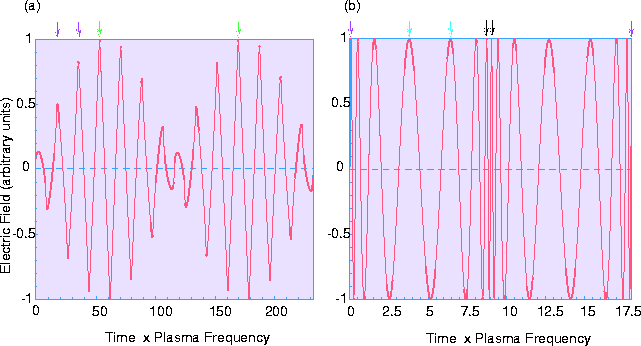
Eric Rowe has shown that large amplitude electrostatic waves in the magnetosphere of a pulsar imply either Amplitude Modulated (AM) or Frequency Modulated (FM) wave modes depending on the strength of the magnetic field.
An electrostatic wave in a plasma involves oscillations in charge density and electric field strength. Large amplitude electrostatic waves are thought to be important in the physics of pulsar magnetospheres, so that understanding their properties and how they affect wave propagation through the plasma is relevant to understanding how pulsar radio emission is generated.
The general equations used to describe the properties of waves in a plasma in which a large amplitude electrostatic wave is present are only amenable to a numerical calculation of how fast the waves either grow in amplitude or are absorbed by the plasma. However, the numerical method can't be used to study how the properties of the electrostatic waves, such as their wavelength and frequency, change as they propagate through the plasma. Eric Rowe has taken a different approach to the problem and has shown how the properties of the waves change with time and how they depend on the magnetic field strength for a particular analytically tractable case.
When the magnetic field is weak the wave is Amplitude Modulated or AM - as shown in panel (a) of the figure below. The wave amplitude changes periodically with time while its frequency is constant. The frequency of the modulation is determined by the magnetic field strength. When the magnetic field is strong the wave is Frequency Modulated or FM - see panel (b) of the figure. In this case the amplitude of the wave is constant but its frequency changes periodically, with the modulation frequency again depending on the magnetic field strength. The strong magnetic field case is relevant to radio pulsars.

In both (a) and (b) the space between purple arrows is determined by the period of the large amplitude electric field. In (a) the space between green arrows is governed by the magnetic field strength. In (b) the spacing of the narrow peaks (black arrows) is determined by magnetic field while the spacing of the wide peaks (blue arrows) depends upon both the magnetic field and the strength of the large amplitude electric field.